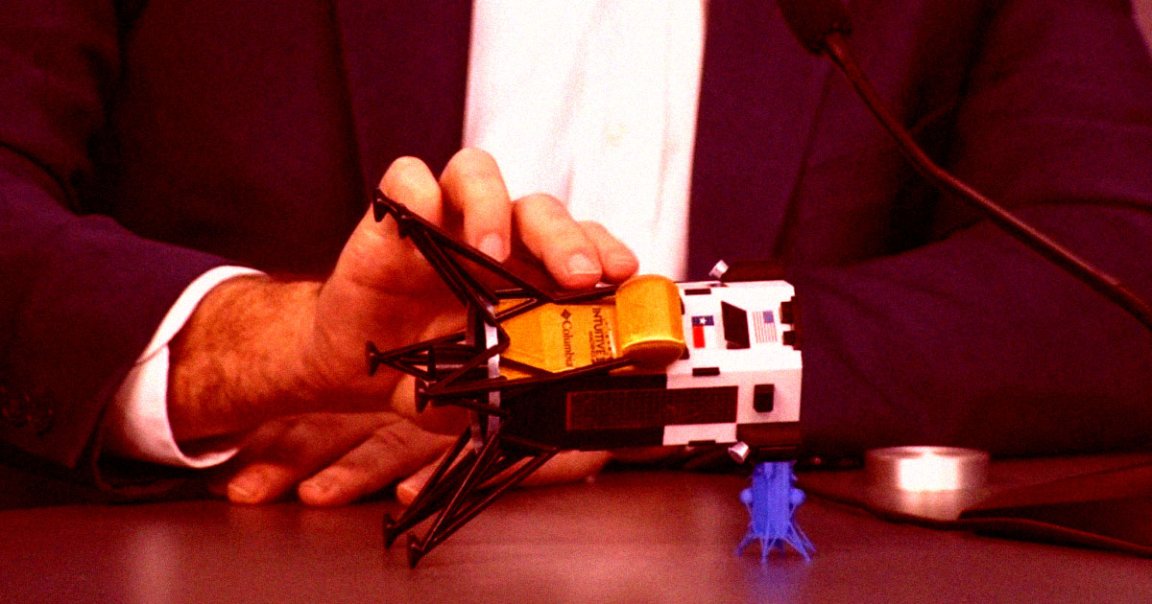
Moon Tipper
Over the last two months, two separate Moon landers have successfully survived the harrowing journey down to the lunar surface — but neither stuck the landing, each embarrassingly falling over as a result.
Last month, NASA’s Odysseus lander, built and operated by Houston-based space company Intuitive Machines, kept moving sideways after making it down to the surface, scraping along the surface and eventually toppling over.
As the New York Times reports, that may have something to do with its considerable height of 14 feet, including solar arrays; something so tall and top-heavy is bound to struggle to stay upright.
Unfortunately, the lander was also missing some crucial data. During its descent, its laser instruments meant for measuring altitude stopped working, leading to the lander’s continued sideways movement, which sealed its fate.
“If we would have had the laser range-finders, we would have nailed the landing,” Intuitive Machines CEO Steve Altemus told reporters last week.
Trip and Tumble
Former NASA engineer Philip Metzger tweeted his own explanation for why the “lunar environment makes everything tippier.”
“The side motion that can tip a lander of that size is only a few meters per second in lunar gravity,” he concluded.
As a result, Metzger argued that landing legs would have to be two and half times as wide on the bottom on the Moon compared to the Earth.
“I’m sure the [NASA’s Commercial Lunar Payload Services] contractors know this and designed for it,” he argued. “My point is that the Moon does this to your hardware, so when things go wrong (as they do) then tipping happens more often than on Earth.”
Intuitive Machines was well aware of the considerable height of its lander, of course. Engineers had to take a whole host of factors into consideration when designing it, including the overall weight and surface area of insulation.
Altemus told the NYT last year that the height was largely due to the configuration of its liquid methane and oxygen propellant tanks, which were stacked on top of each other for balance.
Per the report, spreading out the load over a number of tanks likely would’ve added a considerable amount of complexity and potential points of failure.
However, Odysseus’ height also came with a potential advantage: if it were to have stayed upright, the solar arrays at the very top would’ve been able to stay out of the Moon’s long shadows longer when the Sun was setting.
But given its disastrous tumble, it never got the chance to stand tall and proud.
More on the lander: New Photos Show Catastrophic Damage to NASA’s Moon Lander